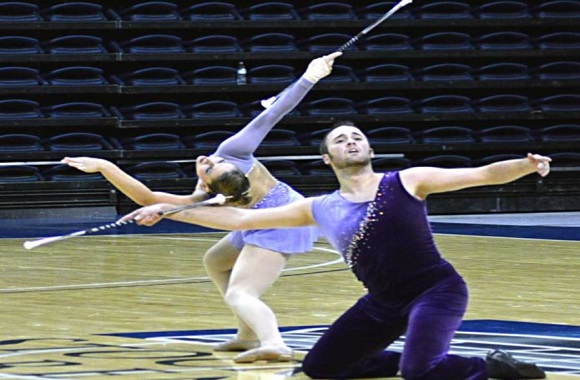Baton twirling is an activity that most people think of as something they did when they were young. A sport that can be traced back to ancient times, baton twirling now is one of the few female-only sports with international federations worldwide.
Since its creation in 1887, baton twirling has taken on many forms—from circus performances to halftime entertainment at football games and remains a vital part of women’s athleticism.
History of Baton Twirling
The Baton Twirling Tradition is found in many places globally but originated in the United States. The first such event was held on April 6, 1876, in Madison Square Garden in New York City. The first world championship was held in Edmonton, Canada, in 1896. In 1896, a women’s baton twirling championship was held in Baltimore, Maryland.
There have been many other events that have taken place throughout the years, building the sport into one of the largest movement sports.
Some short information about sports
A short history of the sports that is similar to rhythmic gymnastics sports is given below.
First contested: Europe and Asia, 19th century
Contact: No
Mixed Gender: Yes
Type: Gymnastic sport
Country: Worldwide
Equipment: Baton
Olympic games: No.
World games: 1993 (invitational)
Rules of Baton twirling
The Baton Twirling rules are similar to the rules of other sports. The main difference is that the baton must be handled in a way that allows for twirling.
In Baton Twirling, the baton can be held straight out, bent, or curled. One hand is used to twirl the baton.
At the beginning of the sport, the baton twirled on the ground. This could cause damage to the baton, the floor, and the twirler.
- Solo and Team Events: Baton twirling competitions feature both solo and team events. Participants showcase their skills in various categories, including freestyle, twirl, dance, and strut routines.
- Baton Handling and Manipulation: Baton twirlers perform intricate routines that involve skillful handling and manipulation of the baton. They execute a wide range of twirls, tosses, rolls, catches, and spins while maintaining control and precision.
- Choreography and Musicality: Twirlers incorporate choreography, dance elements, and music into their routines. They must synchronize their movements with the chosen music, demonstrating artistic expression and musicality throughout their performance.
- Judges and Scoring: Competitions are evaluated by a panel of judges who assess various elements, including technical skills, difficulty, execution, showmanship, and presentation. Each routine is assigned a score based on predetermined criteria.
- Age and Skill Divisions: Competitors are grouped into divisions based on their age and skill level to ensure fair competition. Divisions may include categories such as novice, intermediate, advanced, and elite, with specific rules and requirements for each division.
- Attire and Presentation: Baton twirlers are expected to wear appropriate attire for competitions, which may include costumes or uniforms that complement their routine and enhance their presentation. Attention to grooming, poise, and stage presence is also important.
- Sportsmanship and Conduct: Twirlers are expected to display good sportsmanship and respect for fellow competitors, judges, and event officials. Unsportsmanlike conduct, such as interference or disrespect, may result in penalties or disqualification.
Equipment
There are different batons used in Baton Twirling, which are made of different materials and can be either metal or wood.
Ranging from one foot long to five feet long. There are different batons, such as round, square, rectangular, and X-shaped batons.
There are also different designs on the baton, such as a white bull, the baton of the Olympic Torch, and a baton with a figure on it.
The equipment used in baton twirling is relatively simple and consists primarily of the baton itself. The baton is a long, slender rod made of metal or fiberglass, typically ranging in length from 28 to 32 inches. It is lightweight and balanced, allowing for precise handling and manipulation.
Baton twirlers may also use accessories such as decorative ends, tassels, or tape to enhance the visual appeal of their routines. Apart from the baton, twirlers may wear appropriate attire and accessories that complement their performance, such as costumes, uniforms, dance shoes, and hair accessories.
In conclusion
It requires unexpected skillful control of the human body. It is held in one hand at the stomach. If you remember that if any data gives an error, therefore, comment on the post.
Don’t miss to read also sports
and more.










